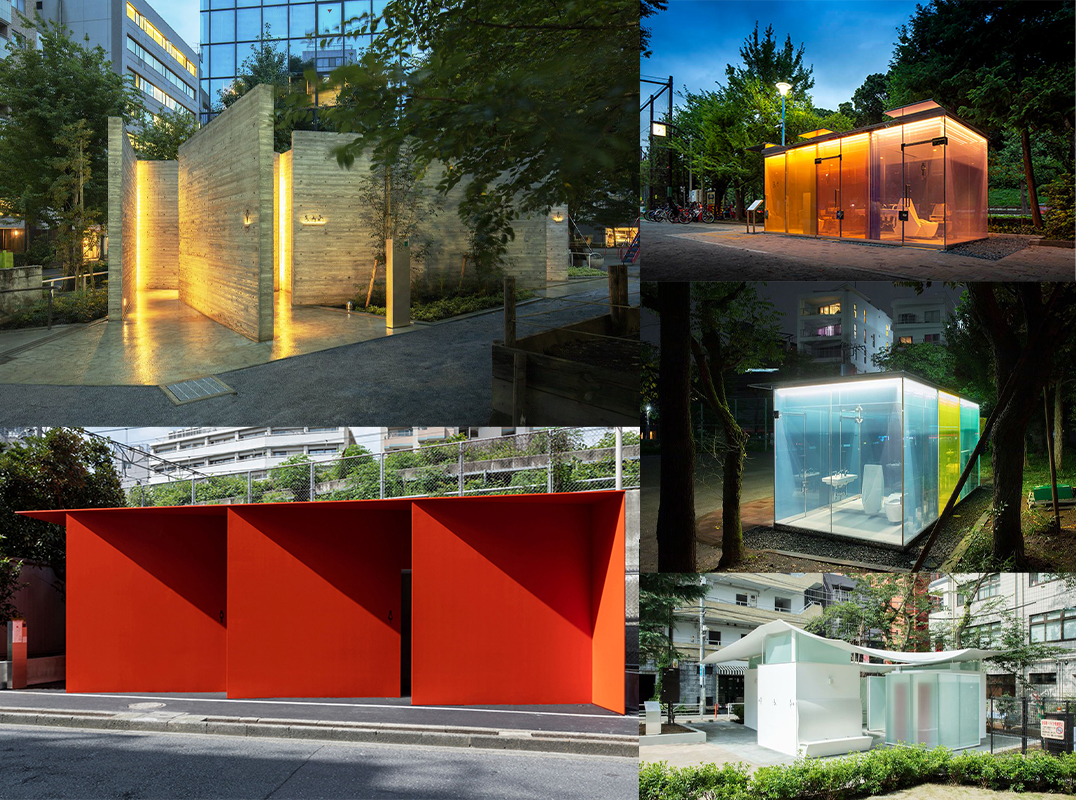Public toilets will be redesigned in 17 locations throughout Shibuya
The Nippon Foundation is launching The Tokyo Toilet project to build public toilets that can be used by anyone. The project will build new toilets at 17 locations in Shibuya, Tokyo, as a way of moving toward the realization of a society that embraces diversity.
3 of the toilets will be made available for use by the general public on August 5.
Japan is known as one of the cleanest countries in the world. Even public toilets have a higher standard of hygiene than in much of the rest of the world. However, the use of public toilets in Japan is limited because of stereotypes that they are dark, dirty, smelly, and scary. To dispel these misconceptions regarding public toilets, The Nippon Foundation has decided to renovate 17 public toilets located in Shibuya, Tokyo, in cooperation with the Shibuya City government. These public toilets are being designed by 16 leading creators and will use advanced design to make them accessible for everyone regardless of gender, age, or disability, to demonstrate the possibilities of an inclusive society. In addition to the construction, they have arranged for ongoing maintenance so that people will feel comfortable using these public toilets and foster a spirit of hospitality for the next person.
The toilets being made available for use from August 5 are in three locations: Ebisu Park (creator – Masamichi Katayama); Yoyogi Fukamachi Mini Park (Shigeru Ban); and Haru-no-Ogawa Community Park (Shigeru Ban). These will be followed by openings on August 7 in Ebisu East Park (Fumihiko Maki), and a location near Ebisu Station (Nao Tamura), August 31 in Nishihara Itchome Park (Takenosuke Sakakura), and on September 7 in Jingu-Dori Park (Tadao Ando).
The toilets will be constructed by DAIWA HOUSE INDUSTRY CO., LTD., and TOTO LTD. will advise on toilet equipment and layout. Maintenance of the toilets will be carried out under a three-party agreement concluded by The Nippon Foundation, the Shibuya City government, and the Shibuya City Tourism Association.
Some locations are still under construction and won’t be completed until 2021 but below are the locations that have already opened.
Squid Toilet by Fumihiko Maki
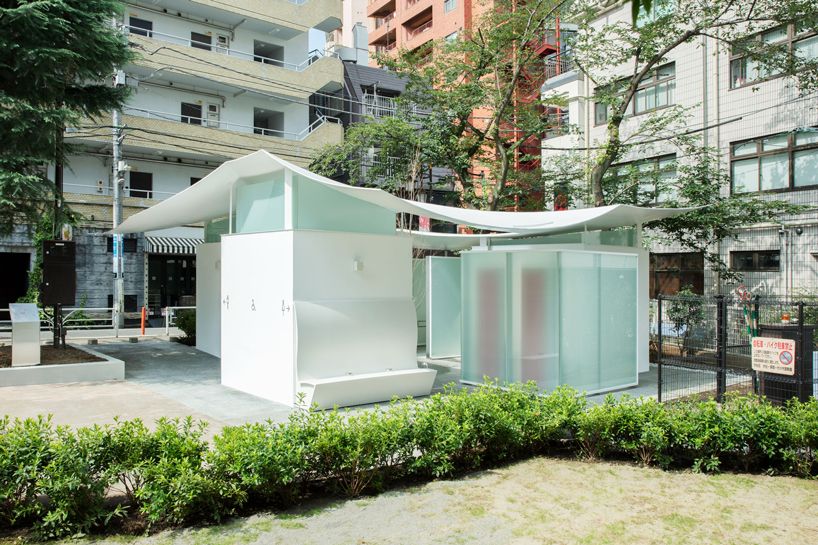
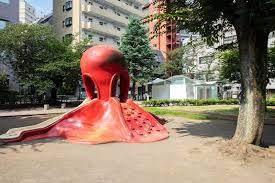
The project site, Ebisu East Park, is a popular neighborhood park that is used as a children’s playground and is filled with lush greenery. This facility function, created by Fumihiko Maki, is not only as a public restroom but as a public space that serves as a park pavilion equipped with a rest area.
Due to the variety of users, from children to people on their way to work, they created a safe and comfortable space that uses a decentralized layout to allow for good sightlines throughout the facility. The cheerful roof that integrates the different sections promotes ventilation and natural light, creating a bright and clean environment while giving the facility a unique appearance similar to playground equipment.
Ebisu East Park is also known as “Octopus Park” because of its octopus playground equipment.
Triangle by Nao Tamura
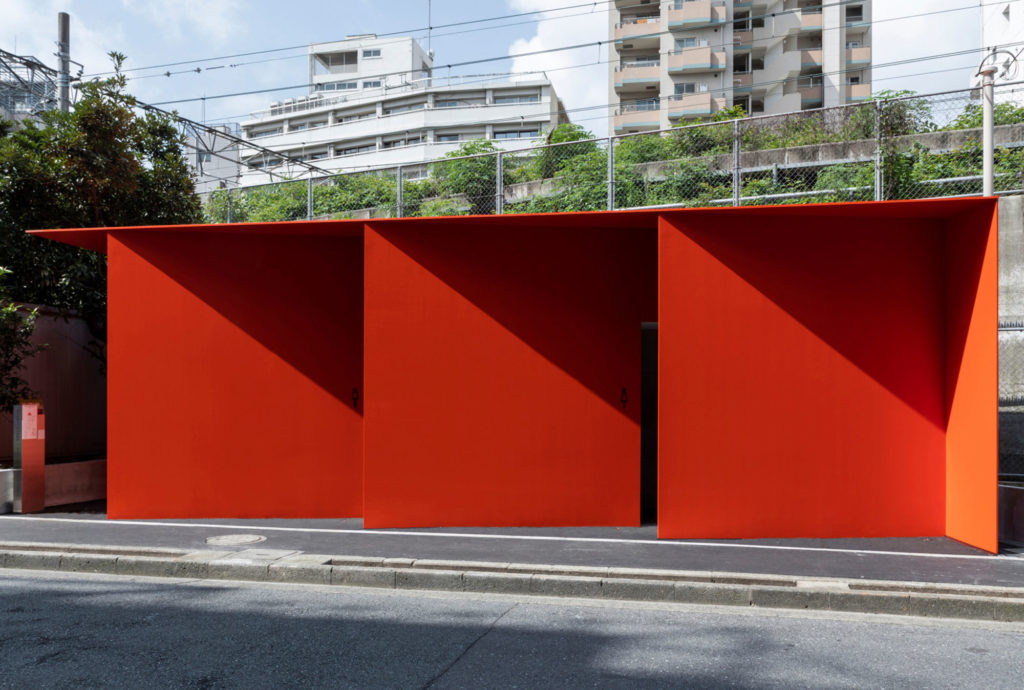

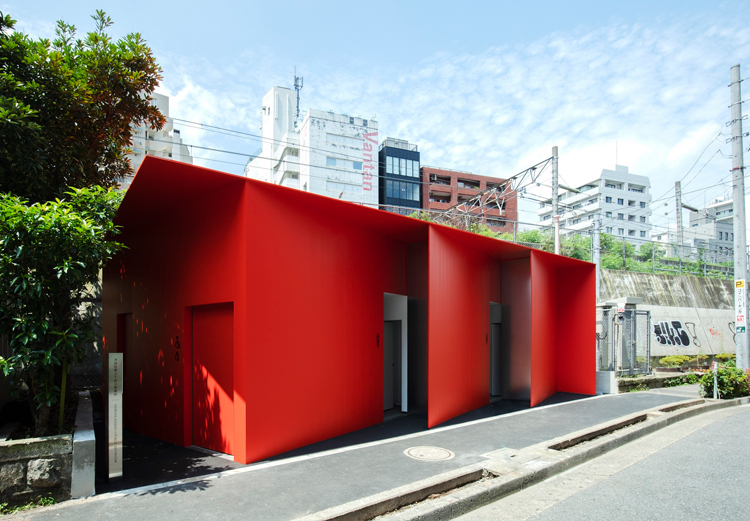
A bathroom is a place where we address physical needs universal to all mankind, regardless of age, sexual identity, nationality, religion, or skin color. As we come into an age of increased awareness, how can a communal space like the public bathroom evolve in order to effectively accommodate our infinitely diverse needs?
Living in New York, Nao Tamura has been privileged to witness the LGBTQ+ community living in alignment with their sexual identities. As he designed this public bathroom for a small triangular lot in Shibuya, he envisioned a society that embraces the LGBTQ+ community and holds space for them to live their truth. He realized that what enables each user a comfortable experience boils down to safety, privacy, and urgency. With this in mind, he created three separate spaces that redefine the way a public bathroom establishes personal space.
The design was inspired by Origata, a traditional Japanese method of decorative wrapping. A symbol of gift-giving, this motif embodies the spirit of hospitality towards Shibuya ward’s multinational visitors and carries the vision to create a safe space that envelopes all users.
This design represents his hope for a society where people from all walks of life feel safe and are able to thrive.
Ebisu Park by Masamichi Katayama / Wonderwall
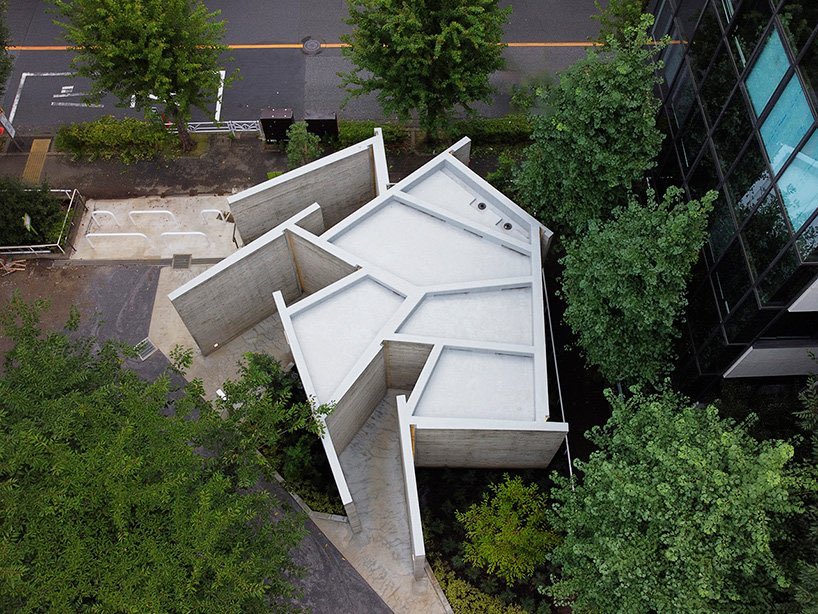
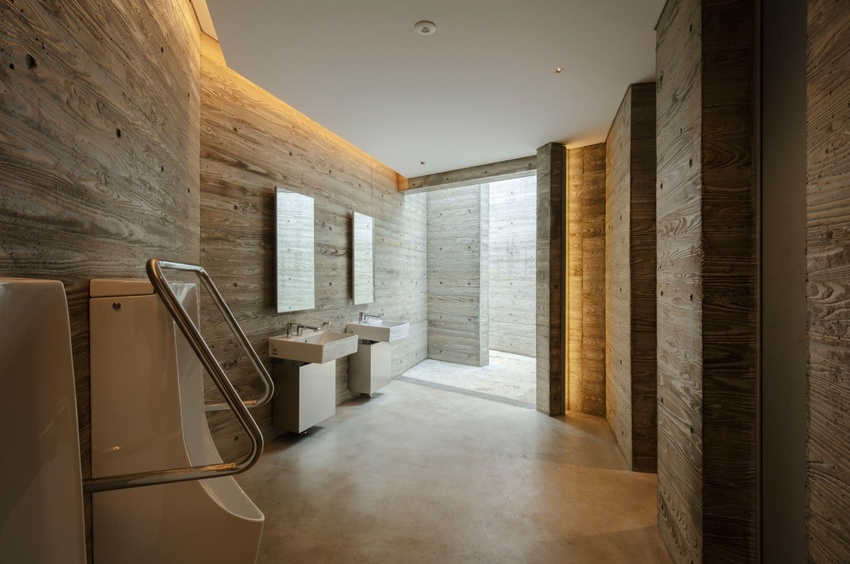
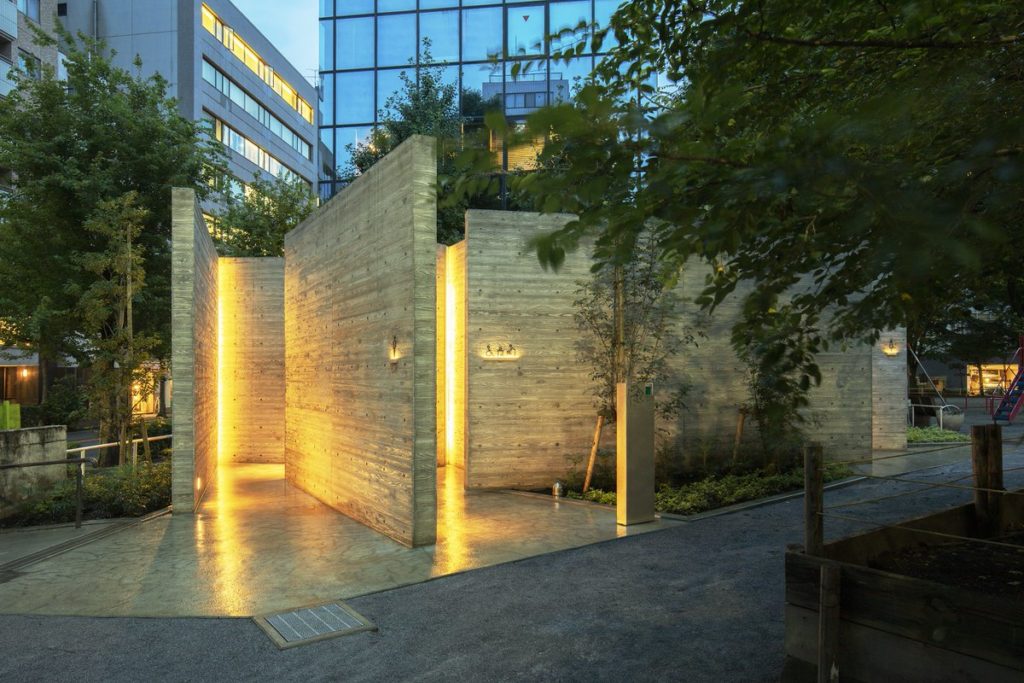
This is a design proposal for a public toilet inside Ebisu Park.
Masamichi Katayama kept in mind a facility that distances itself from architectural concepts and elements: an object that stands casually in the park as if it were playground equipment, benches, or trees.
In Japan, the origin of toilets is kawaya, written initially as 川屋 and later 厠 (also pronounced kawaya). Kawaya was a hut (ya 屋) that stood over the river (kawa 川) dating back to the Neolithic times of the early Jomon period (10,000 to 6,000 BCE). These huts were of primitive and simple designs, often made of hardened soil or pieces of wood bound together. Trying to envision the appearance and atmosphere of the primitive kawaya of the past, he built an “ambiguous space” that is simultaneously an object and a toilet by randomly combining 15 concrete walls. The spaces between the walls lead users into 3 different areas designed for men, women, and everyone. The design creates a unique relationship in which users are invited to interact with the facility as if they are playing with a curious piece of playground equipment.
Yoyogi Fukamachi Mini Park and Haru-no-Ogawa Community Park by Shigeru Ban
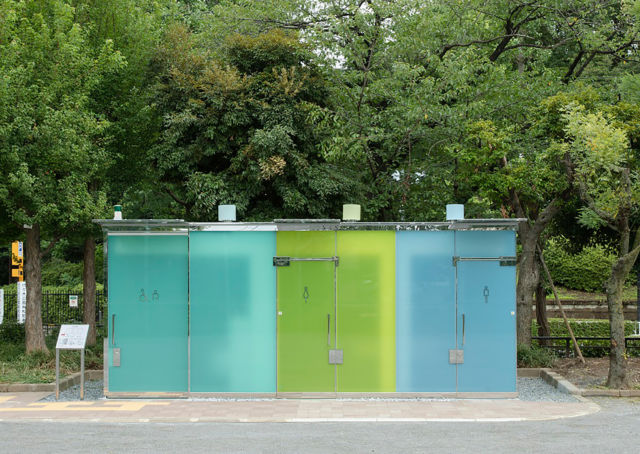
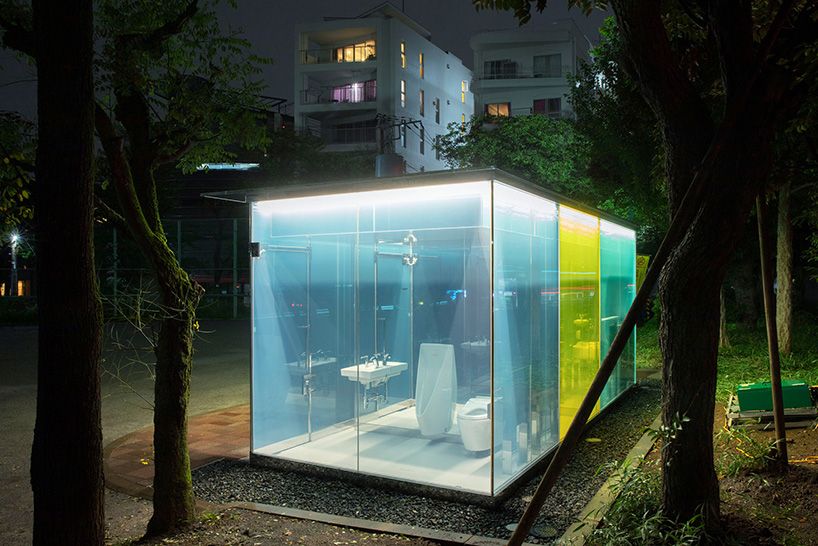
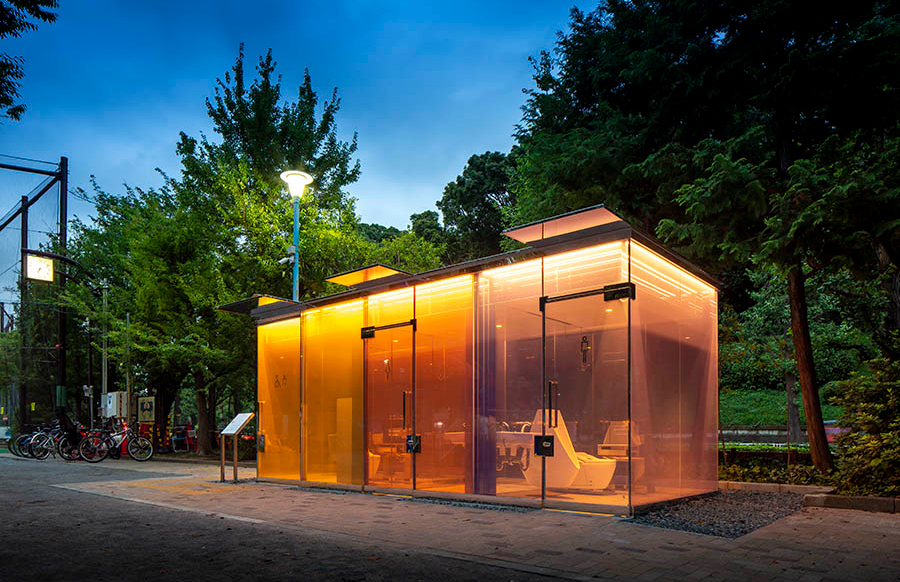
There are two things we worry about when entering a public restroom, especially those located at a park. The first is cleanliness, and the second is whether anyone is inside. Using the latest technology, the exterior glass turns opaque when locked. And it turns transparent when empty. This allows users to check the cleanliness and whether anyone is using the toilet from the outside. At night, the facility lights up the park like a beautiful lantern. This is the Shigeru Ban’s idea for 2 different toilets in Yoyogi Fukamachi Mini Park and Haru-no-Ogawa Community Park.
We can’t wait to see the next coming creations!
Source The Nippon Foundation; tokyotoilet

